I quickly realised I need to master the art of how to make curd at home because buying those Nestle curd cartons from the store was not working out very well for our wallets.
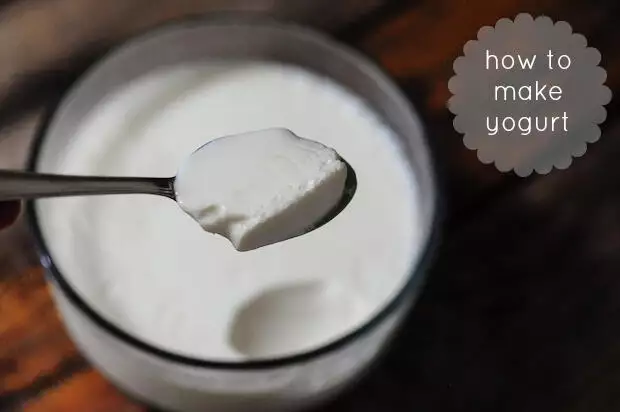
Also, there’s something special about homemade curd. Although you are not really doing anything special, it feels a bit magical to heat up some milk, add some curd in there, mix, set it aside, and magically have it harden up and taste awesome after a few hours. That’s really all there is to homemade curd or yogurt. Indian lassi like mango lassi or strawberry lassi drinkstaste way better when you use homemade yogurt to make them too.
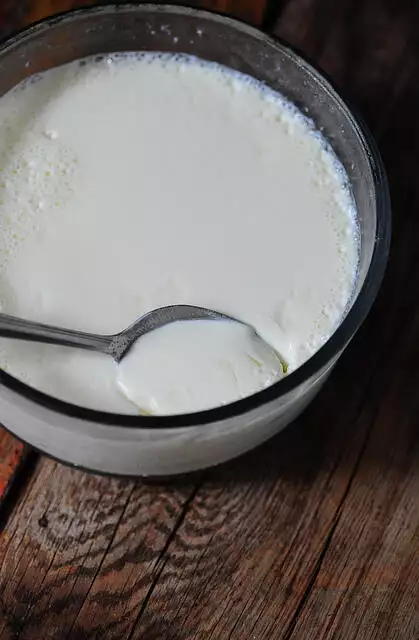
However, there are a few things to keep in mind while making curd at home. I learnt most of it by trial and error and I finally feel ready to share it with you all.
Homemade Indian Curd Recipe
Preparation time: 6 hours
Makes 500 ml set curds
Ingredients for making curd:
500 ml of milk (see notes below)
1.5 tsp of curd
How to make Curd:
1. Bring the milk to boil and set aside to cool. The temperature to which it needs to cool is important. It should be warm – not lukewarm, not hot. A good test is to insert your (clean!) finger in the milk and see if you can hold it there for 10 seconds without needing to pull it out because it’s too hot or feeling too comfortable because it’s too cold.
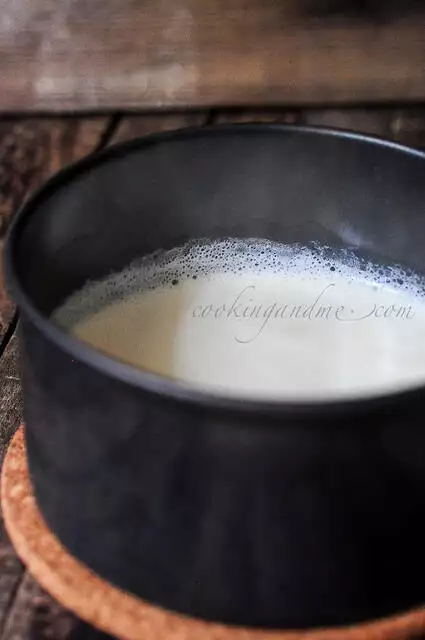
2. Transfer the milk to the container you want to set the curds in.
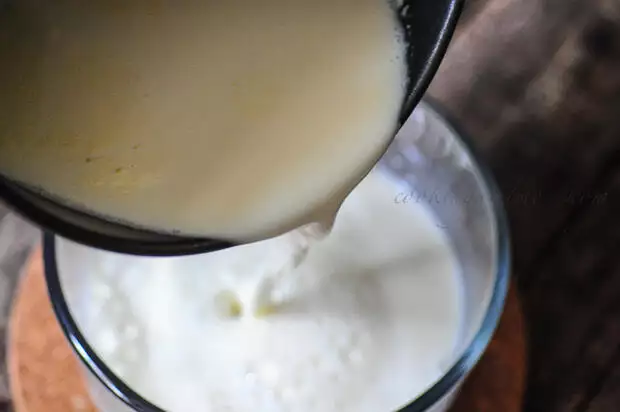
3. Add the curds to the milk. Yes, to make curd you need curd as a starter. The bacteria in our starter then acts on the rest of the milk and turns it all to curd. How cool is that, eh?
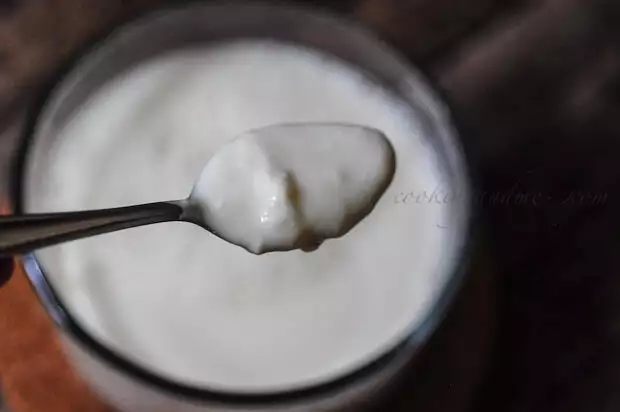
4. Mix the curd and the milk well together. This step is important. The better they are mixed, the quicker and better the curd will set. Using a whisk is a great idea too.
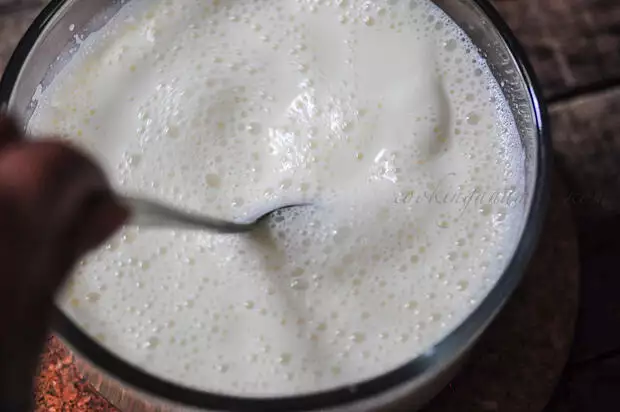
5. Once mixed, keep loosely covered in a warm place. Once the milk has completely cooled down, you can close the lid tighter (even airtight) but this is not necessary.
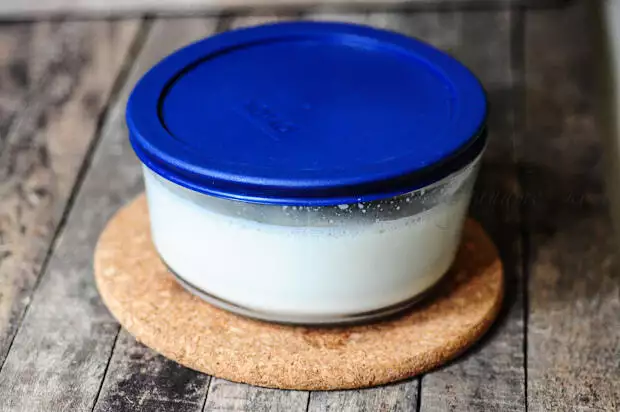
6. After about 6-8 hours, tadaaa! 🙂
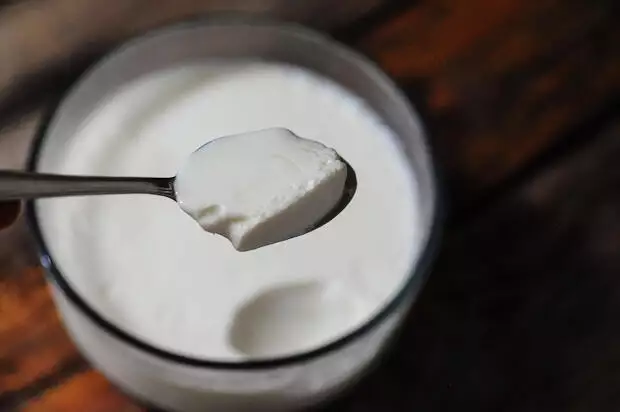
Although I have been making curd at home for more than 4 years now, I still feel great when I see a perfectly set batch of homemade curd.
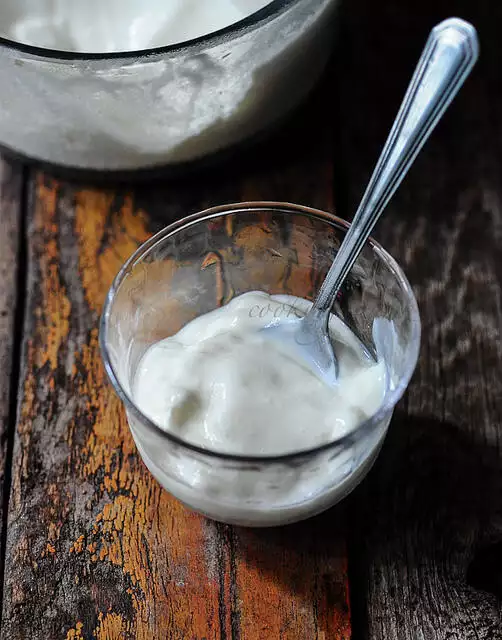
One of my favourite “quick snack” as a kid was to eat freshly made dahi with some sugar.
Notes:
– The type of milk you use for making curd impacts the outcome largely. Amma buys directly from a local milkman so her curd turns sour in a matter of hours. She makes fresh curd every day.
– I use the UHT (ultra-heat treated) milk available in cartons in Singapore. I have tried pretty much every brand and find that the Fair Price full cream milk gives me the best results. You can see a picture of it in the ‘how to make paneer‘ post. Fresh milk works too but the more the fat content, the thicker your yogurt.
– The temperature and humidity of the place you live in plays a major part too. Since Singapore is warm through the year and quite humid, I can leave the curds to set pretty much anywhere and still turn up with great results. If you live in a cold place, I would recommend the oven light technique that we discussed in the idli batter recipe post. Just leave the curd to set in your oven with the light turned on for warmth.
– If your curd is stringy and gooey, that means the temperature of the milk was not right – either it was too hot or too cold. You will have to experiment a bit with this to get it right for the place you live in.
– If the curd hasn’t set even after 6-8 hours (or 10 hours!), it’s possible you used too little starter curd amount, the milk was not warm enough or the temperature is not warm enough.
– What type of vessel should you use to set curd? I am told stainless works out the best but have found out that it doesn’t matter that much. I use pyrex glass bowls and love the convenience. Having an airtight lid to close it once the milk has cooled down helps the setting process for curd.
– Try to use the starter curd at room temperature so it doesn’t bring down the temperature of the milk too much. This is not a make or break situation but no harm in being careful.
– To make curd without curd as a starter, try adding a couple of dry red chillies (with stalk if possible) into the heated milk. I haven’t tried this but a friend of mine said this works as did Sreelu who said it makes curd set faster and thicker in the US.
I think I’ve covered most of the things that could go wrong with making curd at home, but let me know if you have other questions.

Which curd do you use in Singapore as starter??i tried using meiji fresh milk but it turned out gooey.. with any tertra pack milk it’s happening same.. plz suggest what can i do..
i use the paul’s (previously nestle) blue container yogurt. and meiji full fat milk
Hi nags,
Thanks for sending me the link in instagram????This is really helpful for me..I have seen my mother in law setting exactly in the same.. I do it always when we were in Chennai. It’s almost 3 years we came to Singapore, I have never tried setting curd????. Now a days my lil girl started liking more and We started using a lot.. So jus today I tried with Farmhouse fresh milk and it’s doesn’t show any changes after 8 hours????.I find it very interesting after reading through your post..Now I learnt it.. So I wil try with full cream milk next time????
hope it came out successfully? 🙂
Hi…
I did try making the curd at home today using a pinch of sugar and the curd is set so well….in simply loving it..
my curd used to be gooey however today it’s not less than store bought.
Thank you so so much…
I am so happy with the outcome.
You have mentioned everything that can go wring with setting the curd..
That was very helpful…I always went wrong with temperature of milk…so I thought it right this time…
many thanks…
hi nagalakshi mam., i am newly married. i like curd very much. but after marriage i started avoiding it because of making it in a wrong way. now after reading this page, i am really very happy and also getting a new confidence in preparing it as u mentioned here and very eager to taste it.. thank you. it was very useful for me.
glad it helped!
Hi Nageshwari, So do you still continue to feel Fairprice full cream milk gives the best results? So far I have been using the Dutchlady brand. Wanted to give fairprice whole milk a try to check if that tastes better. Let me know if you have changed your choice of milk.
hi there, my name is nagalakshmi 🙂 i currently use farmhouse full cream milk from the fresh milk fridge in the supermarkets and get good results. I have stopped using UHT milk